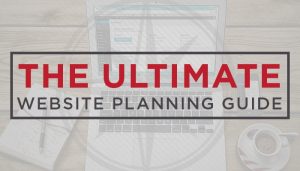You need traffic to your website and it’s no secret that search engine optimization to optimise your website is a fantastic way to go.
In this article, I’m going to cover what you need to know to make your next website or blog post friendly to the search engines so you can get found. You’ll be able to use what I share today over and over on every post.
What you’ll learn about in this post…
- Search optimising your website IS NOT a guaranteed traffic generator
- The keywords you want aren’t always the right keywords to go after
- The key secret to getting the RIGHT search traffic
“Social is the way our work gets discovered. Content that is truly exceptional, unique, and useful can earn tremendous awareness through social media, and that social amplification often leads to great links, which leads to great rankings.”
~ Rand Fishkin, CEO/Co-Founder, Moz
Search optimising your website IS NOT a guaranteed traffic generator
Here’s the truth.
Working on the search engine optimisation for your website IS NOT a guaranteed source of traffic. (Click to Tweet This)
Just by increasing your ranking and where your website places on Google, doesn’t mean you’re going to get a flood of traffic. It’s also important to note that being top of any search engine never EVER guarantees more sales and customers.
So why isn’t Search Engine Optimization all it’s cracked up to be?
Here’s a few reasons why your site might have traffic, but is failing to convert that traffic…
Your Keywords Are Too broad
If you’re at the top of Google for the keyword “shoes”, you might think that this means more awesome traffic and more customers for SURE!

1.5 million people a MONTH search for the term shoes. Even if you captured 1% of that search market, that’s 1500 clicks!
True, but why are they searching for shoes? Do they want images of shoes? Do they want to buy or sell? Are they browsing or getting ideas? There’s NO indication of what they want and why they want to visit your site.
Broad keywords aren’t always productive, they’re really hard to rank for AND there isn’t any strategy behind them.
Your Keywords Are Too Specific
New Orleans based Awesome Shoe Company might capture your immediate geographic ranking, but how many people are searching for that?
I DO believe that focusing on a geographic area if you’re tied to one. But don’t think that you ALWAYS have to think local.
Being too specific could limit the number of people that are searching for your business. Often businesses are guilty for assuming that their customers know exactly what they’re looking for. Or, that the terminology you use is known by your customers
Where people go wrong
 Research research research! It doesn’t take a genius spend a little time researching the right keywords for your business.
Research research research! It doesn’t take a genius spend a little time researching the right keywords for your business.
Businesses make assumptions that they need to really back up. Do people actually search for your business name? Be realistic. Unless you’re Apple or Nike, they probably don’t.
Typically people search or ‘Google’ questions to help them solve a problem. Or they’re looking for a specific product.
Search question examples
- How much should I spend on a bed?
- How do I clean an oven?
- What’s the best way to record a phone call?
Understanding what your customers and users want to learn and know, is exactly how you should be targeting your SEO.
Now comes the tricky part – actually working on your site to build your search engine rankings. It’s not about meta data or writing tons of keywords into every page and blog post. What you need to do is create and write content that ANSWERS the questions that people are SEARCHING for. Revolutionary right?
People might moan about algorithms, content updates, spider-bots etc. etc. Don’t worry about keeping up with Google or Bing’s employees. Assume that they want to get the most relevant articles, posts and products in front of an audience. Your job is to make content that people want to read when and if they find you.
Businesses that stick to the old “stuff a post with keywords and use meta data” WILL get left behind. SEO isn’t about tricking Google or working with spiders, it’s about creating content that wants to get read by your customers.
Need helping getting this all organized? Download my Traffic Booster Checklist it will give you everything you need to make sure your next blog post gets the traffic it deserves!
So how do we do it?
Structure
Having a consistent blog post structure for your posts is a really fast way to build content that does 3 things.
- Easy to read and digest. Making it easier for traffic and customers to consumer and stay longer.
- Easier to write. Forget writers block, you can now write blog posts fast
- Easier to crawl for search engines like Google, meaning you’ll rank faster.
If you’re struggling to create a blog post format, feel free to copy mine
Summary
Use a short sentence to introduce the post. For example “in this post we talk about topic” or “if you read this you’ll be able to result”.
Quote
Search the internet for a quote to use relating to what you’re talking about. There’s always something written somewhere that you can quote and use. You could also link back to that article for sweet SEO gains.
Key takeaways
List the 3 key points that you’re covering off in your article
Key point 1 – write a few paragraphs explaining the top 3 learning points for your topic. Give answers, show solutions and explain how to get results.
Key point 2
Key point 3
Conclusion
Write a brief summary. The easiest way is to highlight your favourite point in the blog and turn an objection.
For example, “my favourite part about cleaning an oven is that it’s easier than people think. You can just leave the chemicals to work and you’re away! I know a lot of people say they haven’t got time to clean like that, but what we’ve found is if you just set aside half a day, it’s done sooner than you think”
Next steps – Give next steps if they want to take it a step further. My favourite line is “if you’re serious about this topic, then you need to…” then give an email address, a lead magnet or a something for them to follow up with.
Set a Regular Posting Schedule & Follow It
Posting regular content is key to building trust with search engines and your customers alike. A posting schedule is easier to stick to when you’re writing regular content.
TIP: Writing two blog posts a week and only publishing one is a great way to give yourself some space when you really can’t write anything.
Here’s an example that might work for you…
- Monday – brainstorm 5 ideas to write about. Common questions, things they should know etc.
- Tuesday – Write out the structure for both blog posts. Use our framework above
- Wednesday – Write the first post
- Thursday – Publish a post
- Friday – Write the second post and schedule it for another time
How to Choose Your Topics
Choosing topics is probably the easiest part of creating content. You have 3 main areas to find ideas.
- Google your own topics and industry and look at what other businesses are writing.
- Search forums, groups and boards for questions that your customers are asking. LinkedIn, Facebook and Quora are great for this
- Brainstorm ideas that you want to talk about (I use Workflowy for this). Think of a few broad topics and then write down more specific titles and sub-topics for blog post ideas
I actually find it helpful to not keep everything I think of. Whenever we brainstorm 5 (or 50!) ideas, whatever I haven’t written that week, I’ll discard. If it’s really a good idea, I’ll think of it again, or come back to it.
Wrap Up
The truth about SEO is writing content that people want to read. Make sure to update and submit your new sitemap every time you publish new content (although you can automate this – or I can show you).
My favourite part about this is that SEO doesn’t have to be hard.
If you’ve got a process and a structure, you can rank your content really quick. Just keep in mind that you need to commit. If you’re not really ready to write and create content regularly, then you’re not going to get the content you want.
Digital & Social Articles on Business 2 Community(42)
Report Post




